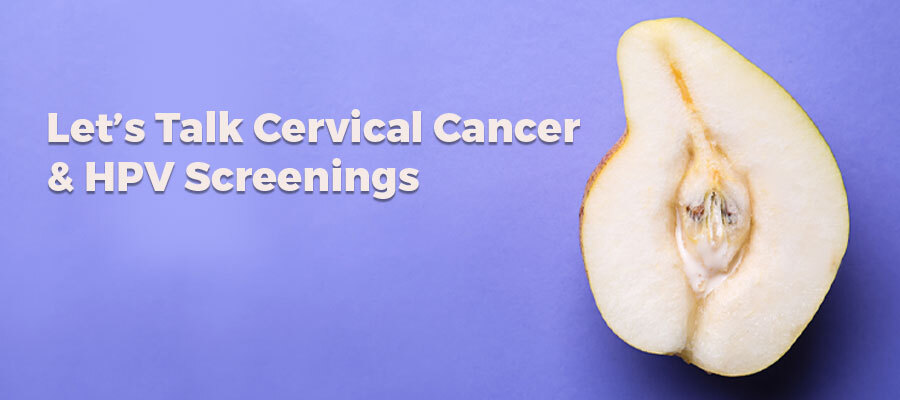Last Updated on March 1, 2022
What is Cervical Cancer?
Cervical Cancer pertains to abnormal cell development in the cervical region, capable of invading or spreading to other areas of the body as it progresses. The cervix, also known as the neck of the womb, is the opening between the uterus and the vagina. Cervical health should be a priority in the health checklist of every woman above the age of 21, regardless of their sexual activity status. Amongst the cancerous disposition, cervical cancer ranks as the fourth most prevalent cancer in women worldwide.
The highest death rate has been observed in low-and middle-income countries. These statistics are due to the lack of sensitization about the disease, sub-par surgical treatment options due to economic disparity, limited access to preventive methodologies and screening possibilities.
In comparison, high-income countries have programs and strategies in order to prevent the progression of HPV disorders. The mortality rate is relatively less as girls are vaccinated against the virus and also regular screening for early identification of the precancerous lesion is performed.
Human Papillomavirus (HPV) and How It Is Absolutely Relevant
95% of cervical cancer cases are almost always caused by the Human Papillomavirus. HPV is a group of more than 200 correlated viruses. It is known to be the most common sexually transmitted infection amidst the sexually active. The virus is transmitted via sexual contact between infected people and can also be transmitted by close skin-to-skin touching during intercourse. It is mostly presented as asymptomatic in infected persons, and this may lead to it being unknowingly spread to their partner, as it manifests slowly over a period of time.
HPV types are categorized into two groups: high risk and low risk. More than 90% of them recover from the virus within 2 years of its transmission without any complications and are deemed to be ‘low risk’. Low-risk disease symptoms usually manifest as warts in the genital or oral region that subside with treatment or over time.
Whereas the indication for ‘high risk’ is more crucial than it just being a passing skin infection. High risk HPV is due to HPV-16 or HPV-18. Infected people falling in the high-risk classification may experience lingering effects in the form of persistent genital warts and eventually cancers of the cervix, anus, and oropharyngeal area.
HPV may infect both men and women. In men, HPV may present as warts on the scrotum, penis, or anal region but usually, it is asymptomatic and goes away without causing major health issues. Some men are more susceptible to the HPV strains that lead to cancer of the penis, anus, and throat. Weakened immune systems and regular anal intercourse predispose them to develop cancer.
Let’s Talk Symptoms!
Human Papillomavirus (HPV)
Human Papillomavirus (HPV) infection rarely results in symptoms. Even when it persists, a chronic HPV infection in the cervix causes precancerous cell alterations that seldom generate changes that can alert the infected person. This worrisome reason is why annual cervical cancer screening is undeniably essential.
Vaginal bleeding:
Vaginal bleeding after intercourse and severe discomfort during sexual activity is an indicator of the potential presence of an initial malignant lesion. Itching or bleeding may be caused by precancerous lesions in other parts of the body as well.
If an HPV infection progresses to cancer, symptoms such as bleeding, discomfort, or swollen glands may become apparent. As cervical cancer advances, more severe symptoms may appear such as swelling of the arms and legs, excessive weight loss, reduced appetite, pain in the pelvic region, vaginal pain, and foul-smelling discharge.
Symptoms and indications vary for cervical, vaginal, vulvar, penile, anal, and oropharyngeal cancers.
What Increases the Risk?
The factors that increase the probability of developing cervical cancer are many. Primarily pertaining to the infected person’s immunity and consistency of exposure to the virus.
Firstly, the determinant that contributes the most is having multiple sexual partners. The greater the number of intimate partners, the more at risk one is for contracting HPV. In addition, having sex at an early age also happens to increase the likelihood of developing cervical cancer.
Furthermore, having a previously diagnosed sexually transmitted infection is an additional drawback. Sexually acquired conditions such as chlamydia, gonorrhea, syphilis, and HIV/AIDS all put the person at a higher risk. These infections weaken the immune system and make the progression of the disease from HPV to cervical cancer a likely occurrence.
Smoking has been linked to cervical cancer. Not only does it predispose and make one susceptible to contracting HPV, but it also increases the chances of a woman acquiring cervical cancer if she is already HPV-positive. In addition, long-term consumption of contraceptives has been directly linked to the occurrence of cervical cancer in women who have been diagnosed with HPV.
What Needs to Be Done To Prevent It?
Every woman’s health agenda should include a healthy cervix. Most women can considerably minimize their chance of acquiring cervical malignancies such as cervical dysplasia or the more harmful, cervical cancer. By taking a few easy precautions, HPV progression can be prevented.
A Pap smear or a Pap test should be a regular screening procedure for women over the age of 21 years. Routine pap tests can aid in the early detection of precancerous conditions of the cervix. Between the ages of 21 to 29, a pap smear should be done every 3 years. For women above the age of 30, an additional test called the HPV test should also be done after every 5 years.
HPV vaccination is recommended for all preteens starting at age 10 and for ages 26 and above if they have not already been vaccinated. Vaccination in people older than 26 years of age is not highly recommended as it provides fewer benefits. This age group is most sexually active and has already been exposed to HPV.




